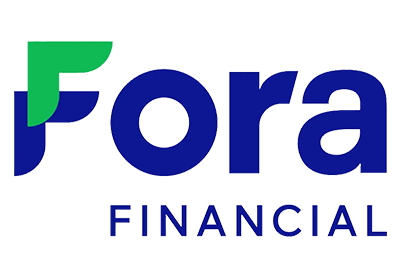Small Business Administration (SBA) loans can be a lifeline for entrepreneurs. They offer more flexibility than traditional financing, come with better interest rates, and even have longer repayment terms. But what happens if you have to default on an SBA loan? If you're falling behind on payments or already have a few missed installments, it’s natural to worry. That's why we're giving you all the details you need to know about SBA loan default implications, why defaults can happen, and what steps you and your lender might take if repayment stalls.
What Does SBA Loan Default Mean
When you can’t keep up with your SBA loan payments over time, the lender may eventually decide that the loan is in serious trouble. Depending on how long a business loan is in default, the lender can start taking legal action against you and your business. We should also mention that SBA loans are partially backed by the government, so the SBA might pay the lender the guaranteed portion. But that doesn’t mean you're off the hook. In fact, it can lead to steep financial and legal fallout for you, including aggressive collection efforts and potential damage to your credit.
A defaulted SBA loan does not just affect your credit. It can also lead to collections, legal action, or the seizure of business or personal assets, depending on the loan structure and the type of collateral involved.
Common Reasons for Defaulting on an SBA Loan
Businesses default on SBA loans for many reasons. Cash flow issues are one of the most common causes, especially if revenue drops or expenses rise unexpectedly. Poor financial planning, market shifts, or delays in receiving payments can also contribute to missed payments.
In some cases, businesses take on more debt than they can manage or face unexpected operational setbacks. While every situation is unique, most SBA loan defaults stem from a combination of financial strain and limited resources for recovery.
What Happens If You Have a Default on an SBA Loan
When you default on an SBA loan, the lender may first attempt to collect the remaining balance through standard collection efforts. If those fail, the lender can file a claim with the SBA to recover the guaranteed portion of the loan.
After that, the SBA may pursue repayment from the borrower directly through a process called a Treasury Offset or may initiate legal action. In many cases, borrowers are given the opportunity to submit an Offer in Compromise to settle the debt for less than the full amount owed; however, this option requires thorough documentation and approval from the SBA.
Understanding the SBA Loan Default Process
Once your loan is officially in default, the lender will typically begin recovery efforts by contacting you to discuss repayment or potential resolution options. If the loan is guaranteed by the SBA, the lender may file a claim with the agency to recover the guaranteed portion of the outstanding balance.
After paying the claim, the SBA may transfer your account to the U.S. Department of the Treasury. At this stage of defaulting on an SBA loan, you could face additional fees, wage garnishment, tax refund offsets, or other federal collection actions. The entire process can move quickly, so it is important to communicate with your lender early if you anticipate trouble repaying your loan.
Can You Settle a Defaulted SBA Loan
In some cases, it is possible to settle an SBA loan default through a process called an “Offer in Compromise.” This allows you to negotiate a reduced payoff amount, which must be approved by the SBA. To qualify, you will need to demonstrate financial hardship and submit documentation showing that you cannot repay the full amount.
If accepted, a settlement can stop further collection efforts and help you resolve the debt. However, not all offers are approved, and you may need the help of an attorney or financial advisor to put together a strong proposal.
SBA Loan Default Rate and What It Means for Borrowers
The SBA loan default rate refers to the percentage of SBA-backed loans that go into default. While default rates vary by loan type and industry, SBA loans generally have lower default rates than traditional small business loans due to the agency’s underwriting standards and oversight.
For borrowers, understanding this rate is important. A low default rate reflects a system that works well for most businesses, but it also means lenders and the SBA take defaults seriously. If you are struggling to repay your loan, it is better to act early than to wait for the situation to worsen.
How to Avoid Defaulting on an SBA Loan in the First Place
Avoiding an SBA loan default starts with proactive financial management. Before accepting an SBA loan, make sure your business has a clear repayment plan and reliable cash flow to cover monthly obligations. Track expenses carefully and adjust your budget when revenue changes to avoid falling behind.
It is also essential to maintain open communication with your lender. If you anticipate a late payment or a temporary drop in income, reach out early to explore deferment or restructuring options. Many lenders are willing to work with borrowers before a situation becomes critical.
In some cases, businesses explore alternative funding sources to help manage cash flow or cover short-term expenses. Platforms that offer flexible financing solutions, such as revenue advances or small business loans, can provide an extra layer of support during slow seasons or while waiting for receivables.



